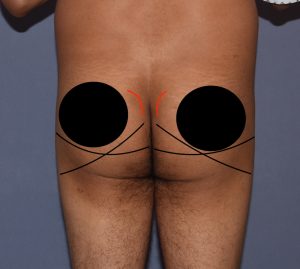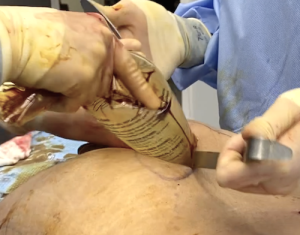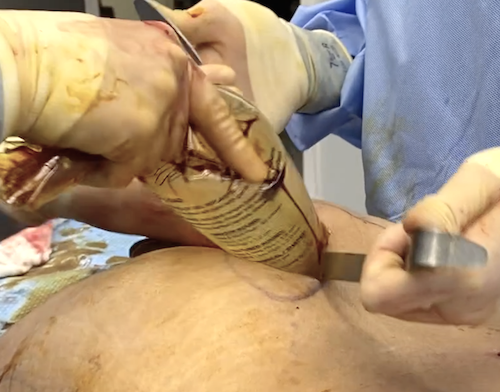Buttock implants have evolved considerably over the past decade or two due to the rise in demand. The overall rise is a reflection of the public’s desire for buttock augmentation in general and implants in particular for those that patients that are not candidates for or have failed BBL surgery. Of the two specific areas of buttock implant evolution the location of the pocket may be the most important factor in long term success. Following a basic implant principle, the deeper in the tissues an implant is placed the better, the subfascial pocket has given way to muscular locations.
The most commonly used muscular pocket location for buttock implants today is intramuscular or inside the gluteus maximus muscle. While effective this is not a natural tissue plane which makes dissection difficult and highly variable (overlying muscle thickness) not to mention traumatic and associated with a significant recovery. The submuscular plane, like the one used in breast implants, has largely been avoided duet its deep location and the presence of the sciatic nerve. But the submuscular pocket is becoming realized as a safe technique that offers a less traumatic dissection and a quicker recovery.

Total opérative time averaged 45 minutes. No significant complications occurred and the only one was a self-resolving seroma. Of greatest importance is that no sciatic nerve -related symptoms occurred or any hematomas.
While this patient series used an epidural (which I don’t use), necessitating a urinary catheter and an overnite recovery until it wears off, that is really irrelevant to the true benefits of the submuscular pocket location. The low complication rates speaks to its benefits for buttock implantation. The shorter operative time is a ‘benefit’ but what counts most is the very low complications.

Dr. Barry Eppley
World-Renowned Plastic Surgeon



